




















































Since stain removal matters to your customers, each stain is an opportunity to impress them.



InkGo is the effective and safe way to remove ink stains from all types of fabric - including acetates. Use it to remove adhesives, too.


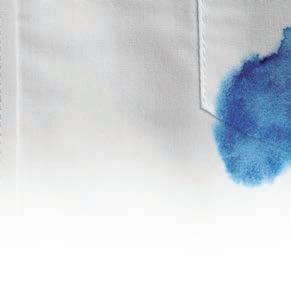

It's eco-friendly... California compliant, chlorinated-solvent and NPE free, biodegradable and non-combustible. And since InkGo is user-friendly and odor-free, it's pleasant to work with.




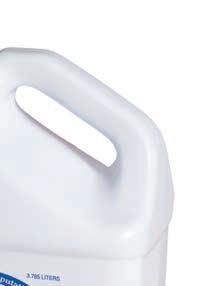
Use InkGo to deliver stain-free cleaning. You'll build your reputation for quality – and keep customers coming back.
STAIN WIZARD at ALWilson.com
To learn more, visit ALWilson.com or call 800-526-1188
A. L. WILSON CHEMICAL CO. Become
8 19 24
Taking the first steps into a new field can be intimidating. We’ve asked drycleaning industry veterans for their advice to those just entering the field, as well as what they wish they would have known when starting out.




While there’s no substitute for experience, there’s a danger in believing you’ve seen it all. Keeping up on new trends and building your skill set are ways to stay ahead of the competition.


A few years ago, Sudsies Garment Care saw a chance to expand its business to include cleaning delicate — and expensive — clothing. We’ll explore the training and equipment that keeps Sudsies’ high-fashion customers happy.
If you need a little help finding this month’s hanger hidden on our cover, here’s a clue. Good luck!





Well, I gotta keep it going. Keep it going, full steam. — The Beastie Boys
When first starting out in a field, it’s obvious that you need to learn all that you can as fast as you can to achieve success. Those starting out in dry cleaning — a labor and equipment intensive industry — especially understand this need.
After time has passed and experience has been gained, however, this drive to expand your knowledge and skills can slowly lessen — to the point where, for many, it disappears entirely. This is where innovation ends, owners can’t adapt to changing conditions and their businesses find themselves suddenly struggling to keep up.
Getting up to speed and staying there is what this month’s issue of American Drycleaner is all about.
In our first feature, “Advice to New Cleaners,” we’ve spoken with industry experts to see what they would tell people just coming into the field. We also find out some things they wish they would have known when first starting out, both from the drycleaning perspective and a leadership perspective.
Our second feature, “Professional Development for the Owner,” highlights the need to continually update your skill set, your mindset and your attitude when it comes to learning and new ideas. For those using a playbook that hasn’t been updated in years, it’s time to start writing a new book to take care of today’s customers.
In a special feature, “Cleaning Couture Clothing,” we explore how Jason Loeb of Florida’s Sudsies Garment Care branched into caring for delicate and expensive garments. A few years ago, Loeb saw a chance to expand his business in this area, and today he and his team are seen as experts in this expanding field.
Understanding just how much we don’t know can be the fuel we need to keep growing and increase our chances of success. At American Drycleaner, our mission is to keep you up to date and moving in the right direction.
American Drycleaner (ISSN 0002-8258) is published monthly except Nov/Dec combined. Subscription prices, payment in advance: U.S., 1 year $50.00; 2 years $100.00. Single copies $10.00 for U.S. Published by American Trade Magazines LLC, 650 West Lake Street, Suite 320, Chicago, IL 60661. Periodicals postage paid at Chicago, IL and at additional mailing offices.
POSTMASTER, Send changes of address and form 3579 to American Drycleaner, Subscription Dept., 125 Schelter Rd., #350, Lincolnshire, IL 60069-3666. Volume 90, number 4. Editorial, executive and advertising offices are at 650 West Lake Street, Suite 320, Chicago, IL 60661. Charles Thompson, President and Publisher. American Drycleaner is distributed selectively to: qualified dry cleaning plants and distributors in the United States. The publisher reserves the right to reject any advertising for any reason.
© Copyright AMERICAN TRADE MAGAZINES LLC, 2023. Printed in U.S.A. No part of this publication may be transmitted or reproduced in any form, electronic or mechanical, without written permission from the publisher or his representative. American Drycleaner does not endorse, recommend or guarantee any article, product, service or information found within. Opinions expressed are those of the writers and do not necessarily reflect the views of American Drycleaner or its staff. While precautions have been taken to ensure the accuracy of the magazine’s contents at time of publication, neither the editors, publishers nor its agents can accept responsibility for damages or injury which may arise therefrom.
Publisher
Charles Thompson
312-361-1680
cthompson@ATMags.com
Associate Publisher/ National Sales Director


Donald Feinstein
312-361-1682
dfeinstein@ATMags.com
Editorial Director
Bruce Beggs
312-361-1683
bbeggs@ATMags.com
Editor
Dave Davis
312-361-1685
ddavis@ATMags.com
Digital Media Director
Nathan Frerichs

312-361-1681
nfrerichs@ATMags.com
Production Manager
Mathew Pawlak
Advisory Board
Jan Barlow
Mike Bleier
John-Claude Hallak
Monika Manter
Wesley Nelson
Kyle Nesbit
Fred Schwarzmann
Vic Williams
Wayne Wudyka
Contributing Editors
Dan Miller
Diana Vollmer
Martin Young Office Information
Main: 312-361-1700
Subscriptions
847-504-8175
ADC@Omeda.com
www.american drycleaner.com








































In a tight labor market, many dry cleaners are looking for ways to fill positions and minimize turnover. For this American Drycleaner Your Views survey, we asked our respondents to describe their methods for keeping employees loyal to their business.
When describing their current labor situation, one third (33%) of respondents said “we have all the help we need,” while another third reported they were “constantly looking to fill positions.” While 16.7% responded that “it’s good but could be better,” the other 16.7% said that “we can’t offer some services because of staffing issues.”
A little more than half of our respondents are finding success in combating turnover, while the other half are struggling. In our survey, 41.7% reported that they had “almost no turnover,” while 16.7% said that they had “positions open, but we are able to fill them.” On the other side, a quarter (25%) of those responding said that “turnover is a major challenge,” and 12.5% said “we can’t keep people in the job.”
Part of finding and keeping people on the job is, of course, compensation. When asked how our owners have changed employee compensation in the past year, half (50%) said they have offered “raises across the board.” Tied at 16.7% each were those who offered “raises based on seniority” and “raises based on performance.” The remainder of the audience, at 12.5%, report they have “not increased wages in the past year.”
We also asked our respondents, besides pay, what other benefits have they put into place to keep employees? In addition to vacation and flextime, answers included:
• A comfortable work atmosphere. We get to know our staff and help them when they need it.
How would you describe your current labor situation?
How would you describe your current labor situation?
33.3% 16.7% 33.3% 16.7%
We have all the help we need It’s good, but could be better
33.3% 16.7% 33.3% 16.7%
We have all the help we need
It’s good, but could be better
We’re constantly looking to fill positions
We’re constantly looking to fill positions
We can’t offer some services because of staffing issues
We can’t offer some services because of staffing issues
What factor is turnover in your company’s positions?
What factor is turnover in your company’s positions?

16.7% 25.0% 12.5%
We can’t keep people in the job
• Free dry cleaning, flexible hours, celebrating birthdays with a lunch, and in the summer we have the ice cream truck visit us several times.
When asked how they’ve adjusted their leadership styles in order to better work with their staff and keep them, answers from our audience included:
• It’s a continual work in progress to make time for meetings and make sure our employees know we care about them and are listening to their needs.
• Getting feedback on about their concerns.
We have almost no turnover
Positions open, but we are able to fill them
Turnover is a major challenge
We can’t keep people in the job
Turnover is a major challenge 0723 ADC Charts.indd 1 6/12/23 10:54
Additional comments from our respondents included:

• Employees are our most important asset. Take care of them. Not just with dollars, but seek a personal relationship with them. Show them how much you care about their general welfare.
• We are still dealing with a what I term “COVID Economics” — minimal staff, working harder, adapting delivery and work to remain in business.
The “Your Views” survey offers a current snapshot of the trade audience’s views. The publication invites qualified subscribers to American Drycleaner emails to participate anonymously in the unscientific poll each quarter.








































































 By Dave Davis, Editor
By Dave Davis, Editor

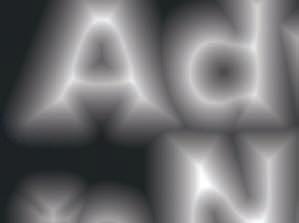
While many dry cleaners are part of a generational business, passed on from parent to child, there are others who are just now entering the industry with optimism but not a lot — or in some cases, any — experience.
As an industry that often prides itself on its willingness to share ideas and offer suggestions to those looking for answers, what would drycleaning veterans say to those who are just coming in?






“I didn’t get shot out of a cannon into this (business),” says Brian Butler, president of Columbus, Ohiobased Dublin Cleaners. “I grew up in it.” Butler is the third generation of his family running Dublin Cleaners. He worked in the business growing up, and returned to take up a leadership position in
2003. So, what’s the first bit of advice he would have to someone considering opening a drycleaning business or buying an existing one?
“Do your due diligence,” he says. “When people ask me about this business, and I tell them stories, sometimes they’re shocked.”



Butler recalls speaking to a supplier who had been in the business for about seven years. “He said, ‘I’ve been a part of a lot of different business models over 30 years, and I’ve never seen a harder way to make good money than being a dry cleaner.’”
Jennifer Whitmarsh, who opened Snappy Dry Cleaning in Williamsville, New York, in November 2022, certainly did her due diligence. While she is new to owning a cleaning company, she has more than 18 years of experience in the field, having started at age 16.
“It wasn’t a family business,” she says. “I just happened to get into it because I had a friend who was in it. I was working at the time in a pizza shop, where the leadership was not good. At the dry cleaner, I just loved

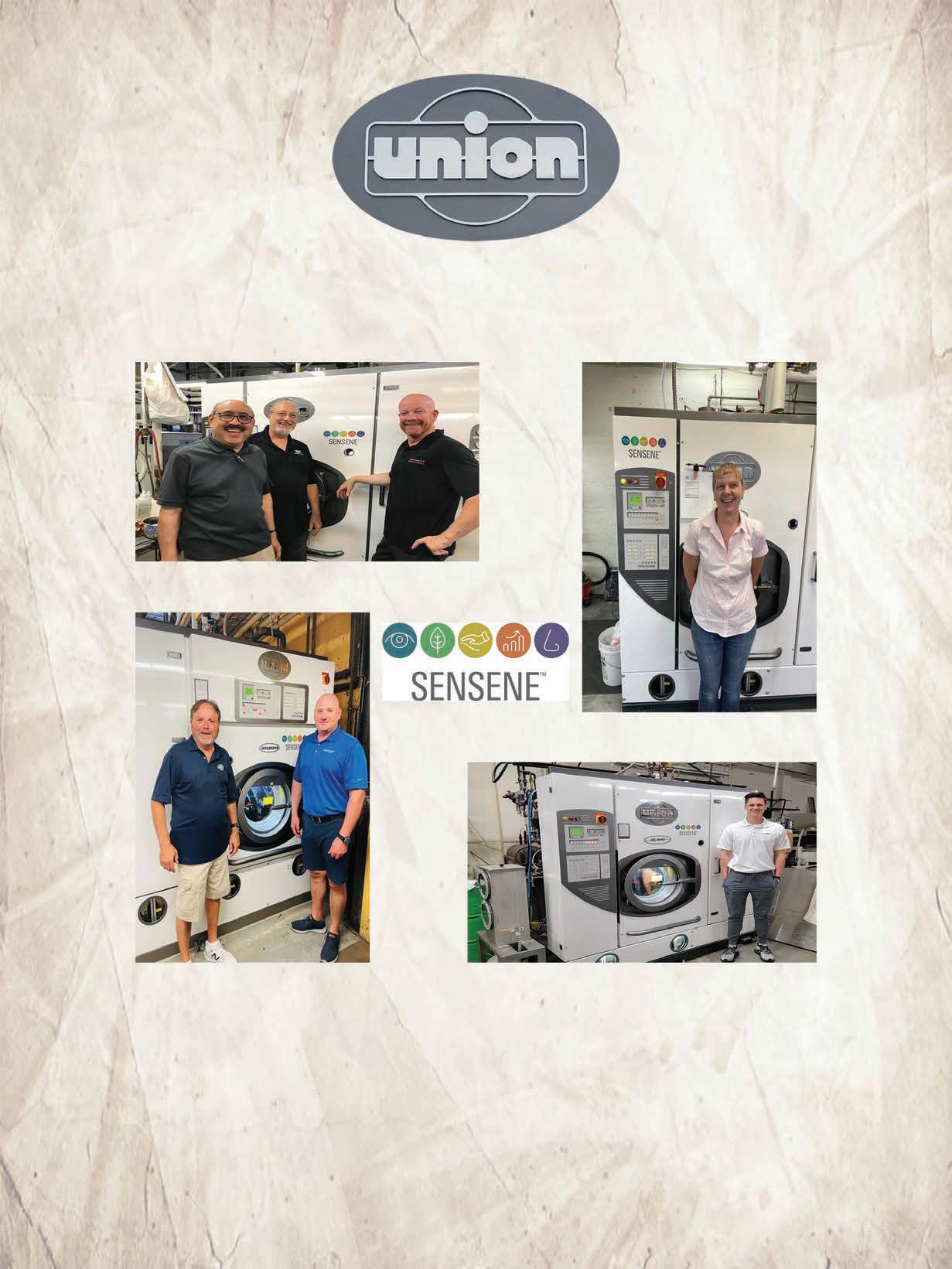

After college, she became an office manager, and again started working at a dry cleaner, this time at an administrative level, and eventually becoming a partner. Over time, she and the owner talked about Whitmarsh buying him out of the business, but couldn’t come to an agreement. Whitmarsh then went to work for The Route Pros consulting firm as a customer service coach on a remote basis, but the idea of owning her own drycleaning company never left her.
“I said to them, ‘As long as I can own and operate my own cleaners locally, I’m all in,’” she says, “and they told me, ‘Of course you can.’”

Even with the benefit of years of experience in the field, taking a leadership role in a drycleaning company can be an eye-opening experience.

So, what was Butler’s biggest surprise?
“The amount of energy that it’s going to take to lead effectively, because it’s a lot of people in a very laborand people-heavy business,” he says. “It’s not the ‘blocking and tackling’ that’s hard — how to run a trouser press is a definable objective and skill. It’s more of getting into the mindset and understand why an employee won’t show up on time or perform their task in the way they’ve been trained. It’s figuring out, when someone isn’t getting along well with others, what the bee is in their bonnet.”
Butler likens this experience to becoming a parent for
the first time.

“You can study all the books,” he says. “You can have all the older siblings and parents and aunts and uncles and cousins tell you what it’s going to be like, and you can understand their words. But you don’t feel their meaning until after you’re driving home from that delivery unit thinking, ‘Oh, my God, for 18 years, no one’s coming to my rescue.’ Then you know what they meant.”
For Whitmarsh, she wishes she had understood how much knowledge about the industry is available, simply for the asking.





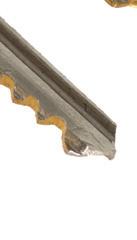




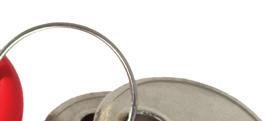

“I’ve kicked myself over the years about this, but I wish I would have started soaking up more of the ‘industry as a whole’ knowledge rather than just ‘local’ knowledge,” she says. “I truly wish I would have been going to Clean Shows or even small regional shows more over the years. I quite literally didn’t know any of those existed until I was 16 years into my career. I just had no idea, and I really feel like I would be 10 steps ahead if I had.”
In fact, those entering the field, Whitmarsh says, are sabotaging their efforts if they don’t take advantages of these resources.
“The industry is much bigger than the four walls that you are in,” she says. “So, I wish I would have learned that, and I wish somebody would have brought it to my attention, or told me about it sooner than when I finally did discover it.”

Starting a business requires a lot of time and energy from the owner, and those who aren’t prepared for this could be in for a rude awakening, Butler says.
“It is a business that you have to show up and actively manage — at least until you can scale it enough that you can pay somebody to show up and actively manage,” he says. “You hear about ‘passive investments’ — this is the 180-degree opposite.



“In our case, we are doing thousands of custom jobs every day, and each person is going to want an ideal outcome that might be different from another’s. So, it’s extremely active. This is custom work, and with custom work, you need ownership and highly incentivized management, very close to the ground level.”





Whitmarsh agrees with Butler’s assessment.
“Whether you are starting out with a ton of knowledge about the industry or not, you still have to be present,” she says. “It’s a balancing act. We often talk about how you need to delegate, and that you can’t do everything yourself. However, when you’re a startup, like I am, there’s not necessarily a bunch of people to delegate to — there’s not a line out the door.”






After the initial surge of getting a company operational, Butler believes that one of the first goals a new cleaner should have is to transition from the day-to-day work of cleaning into performing the jobs only a leader can do.





“Grow to a point where you cover your fixed costs to create some kind of cash flow,” he says, “and then from there, make vigilant efforts to make yourself less necessary in the production flow. Until you can get up above that business, you are just sort of floating in the current — you can’t be working on strategic items when you’re unloading the machines and mucking out the stills.”
The owner’s attitude often can determine the business’ ultimate success. Butler urges owners — both new and experienced — to pay attention to their mindset, because there’s a lot riding on it.

“I’m all in, and success is my only option,” he says, “and that probably applies to almost any business. Check your excuses at the door and clear your calendar, because
when you’re little, you’re everything. When you’re new, you’re almost always little. Even if you buy into an existing business that has large volume, you’ve got a big nut to cover, because you’ve borrowed the money from somewhere or taken it from your own savings.”


For Whitmarsh, she’s found that their mindset is really the only thing under an owner’s complete control.
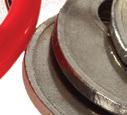


“Stay positive, stay motivated, stay driven, and don’t worry about your ‘competition,’” she says. “Just do what you know. If you’re so worried about what everyone else is doing, then you can’t be focusing on what you’re doing and where you’re going. Keep your head down, but keep your eyes open.”




In a field as rapidly evolving as the drycleaning industry, Whitmarsh knows that it is vital to continuously look for learning opportunities, whether you’re new to the industry or a veteran.



“I would 100% suggest going to the DLI (Drycleaning & Laundry Institute) training,” she says. “I was fortunate enough to go to that in 2019 for both their intro and the advanced classes. Now, at that time, I had 15 years




































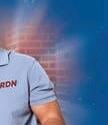


under my belt, and I was going to an intro course. A lot of people would have said, ‘I already know this — I don’t need to go to that class.’ But you want to build as strong a foundation as you can. For me, the handson experience and the schooling experience were so important.”
It was also instrumental in building her network of peers.
“Not only do you learn techniques, but you also get to meet other individuals in our industry,” Whitmarsh says. “That’s what got my feet wet when it came to learning about this whole other world out there.”
She understands that this search for knowledge must continue throughout her career.
“Soak up as much education as you can,” she says. “There are a lot of free things that you do when you’re a part of association. You don’t have to join all of them — not everyone can do that. Pick an association — a national or even a regional one — and join so you can get to know other people and get to start to learn the lay of the land.”
Having a group of people available to answer questions, bounce ideas off of, or simply to share the challenges of leadership is invaluable, Whitmarsh says. Many people in the drycleaning industry embrace this type of interaction.

“Most of the professionals in our industry just want to help people,” she says. “They just want to share what they know. And everyone’s got their own way — it doesn’t mean that everybody’s right — but it’s important to share the knowledge with people. I’ve got an entire network of
people available who I didn’t have prior to 2019. Just last week, I called somebody about linens. It all depends on the question, so I just utilize the network. And they are friendships — it’s more than just a network.”






Apart from organization, Butler has found another method of continuing his education and that of his team members.
“Our industry has some amazing consultants,” he says. “They are not cheap, and yet are worth every penny. Find out who’s available in your market and figure out how to pay for it because it’s going to pay you back — they know their stuff, and they stay current on equipment and trends.”









When it comes to charting a course for your business, Whitmarsh believes in starting with the end in mind.



“I’m already thinking about how to sell Snappy, and I love my cleaners — I’m not going anywhere,” she says. “But I also know that I don’t want to be 85 years old and trying to fix a machine that’s broken because no one else knows how to do it. Think about what kind of life and what kind of freedoms you want in your 50s, 60s, 70s and beyond. Think about your goals and reverse engineer them.”
As for short-term goals, Whitmarsh urges owners to pay attention to how their business treats its customers.






“Think about how you want your customer experience to be, and think about how you’ll get there,” she says. “Then live it, breathe it, understand it, execute it, practice it and train it to the best of your ability, over and over again with every single team member. Just because I’m not at the front counter of Snappy Dry Cleaning shouldn’t mean that the customers are going to get a different service.”
While there are a lot of moving parts to running a business, and it can feel daunting when first starting out, Whitmarsh says it pays to focus on one thing at a time.
“Look at your processes,” she says. “It’s a big elephant to eat, so don’t get overwhelmed. Look at your processes, figure them out, hammer them down and train to them.”
Above all, Butler says, have an optimistic but realistic attitude about the business and the big picture.
“This industry is not for the faint-hearted, but it can be rewarding,” he says. “I’d imagine farming the same way. That’s another group who works very hard for their money, but many of them look very happy and content with what they’re doing. My family has enjoyed a good life for three generations in dry cleaning, and made it through everything from the Great Depression to World War II to COVID. So, if you come committed, it can reward you.”

SMRT is dry cleaning software that puts every aspect of your business operations in one easy-to-use interface and automates tasks you’ve always dreamed of simplifying. Time is money - and now you’ll have more of both. How can you be sure SMRT gets your business? Because we are dry cleaners too. Let us show you the way.




“I’M BLOWN AWAY BY SMRT MARKETING. MY JANUARY ROUTES ARE UP 41%, AND MY RETAIL STORES ARE UP 49%. WOW!”
ELTON CERDA, NYC DRY CLEANERS
Your business is your life. Live SMRT.
SMRT Marketing slashes the time and effort required to grow your business. Our automated tools match your customers with the right messaging at the right time, build your digital reputation, and deliver explosive results. Your SMRT System is designed to handle it all. The question is, are you ready?



MARKETING IS A GRAND SLAM FOR OUR BUSINESS. ”
“I am very pleased with how the software is performing and the functionality. It has made communication with our customers more robust and streamlined. Issues I have posed to the company have been listened to and actual changes have taken place based on recommendations. have Implemented around 15 different software products on a large scale in my career and would have to say this was one of the best experiences so far.”
“I used a legacy system (the largest in the industry) for 13 years before switching to this “upstart” back in 2017. The difference was immediate, obvious, and impactful for our operation. And that was back when they were an upstart, and the software was still in its relative infancy. They are now one of the dominant players in the market, and for good reason. The absolute best thing about this software, IMO, is the way customer communications are handled. It’s partly an email client, part text interface, and part slack, all tied into one, flawlessly.”
“...from the change over to the delivery for my business the SMRT Systems is [by far] the best at teaching employees how to work the system. My customers swear that the texting to let customers no the there Dryclean orders are done is [easily] the best in our industry! So glad we went with SMRT!”
BILL
“The developers are always working to make the system work better. It already works great but if there is something that you would like for it to do you can request it and it will probably get done. I also like that it is so easy to use. New associates can be up to speed in just a few days.”
“We have improved garment tracking and communication internally and with customers. We are able to be really transparent. The customer interface is great. The team is great to work with! Our systems and processes are getting streamlined in a way we’ve been dreaming about for years, but had roadblocks with previous software.”

“The migration to SMRT was validated and praised by both our multi-generation of employees and customers. The ease of learning, navigating, and customer interaction has elevated our service and won the confidence and respect from all. Reporting and data analysis continues to become even more sophisticated. Unlike many services where support diminishes after the honeymoon stage, the SMRT support team continues to be very responsive with great attitudes long after conversion.”
“Our internal company communications, automation with management reporting, billing and customer resolutions have been the biggest benefits with the software implementation. What took several emails, manual phone calls and meetings with our management are now easily reported across all communicaitons channels and have reduced the time to resolve day to day processes.”
“...SMRT allows you to follow real time the daily ins and outs of your business. am able to physically leave my facility and check in remotely. This was a huge step in me being able to devote time with my family, and giving me back control over my business.”
“My overall experience with SMRT has been fantastic! They are a great partner to have in the industry.”
“My overall experience with SMRT has been great. The customer support and complete openness to look for and create new functions has made our everyday use easier. The ability to track garments, contact customers, track drivers, and option to make just about any kind of data report we request has been a life saver.”
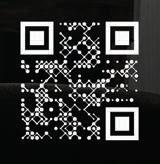
“The extra communciation features for my team and our customers. The ease of use. The delivery and route optimization features to help build and organize our growing Pickup and Delivery system. Has incoporated into our marketing efforts beautifully.”

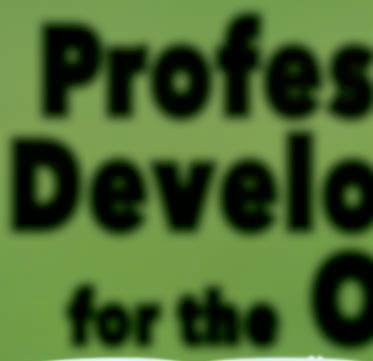
lieves, can be dire.
By Dave DavisWhile there’s no substitute for hard-won experience in the business world, there can be a temptation to start to rely solely on that experience and stop looking for new ideas, education and viewpoints. At this point, stagnation can set in, and competition can gain an advantage.
This is especially true in a field such as dry cleaning, where evolving technology, societal behaviors and customer expectations are changing more rapidly that ever. Owners who aren’t willing to adjust their mindsets and put in the time and effort necessary to learn new skills could find themselves at a disadvantage.
“There’s an old saying: If you keep doing what you’ve always done, you’re always going to get what you’ve always had,” says Kermit Engh, owner of Fashion Cleaners in Omaha, Nebraska, and the managing partner of Methods for Management, a consulting firm for the drycleaning industry.
The cost of this unwillingness to change, Engh be-
“If you’re not growing, if you’re not advancing, if you’re not looking at new technologies, if you’re not paying attention to your market, and paying attention to trends, you will be out of business,” he says. “Not today, not tomorrow, but you’re not going to have a business that is salable down the road.”
There is an arrogance to thinking that past experience will predict future results, Engh says, and holding onto that mindset will prevent both the owner and their business from reaching their potential.
“If someone says they’ve seen it all, their mind is now closed. They haven’t seen it all — they’ve only seen what they’ve seen,” he says. “I find it sad when I meet up with dry cleaners who are in their 70s and 80s and are still the person turning the boiler on in the morning. They have no exit strategy. Frankly, they don’t have a business. They have a job. But, if they are developing themselves professionally, they’re building a business that has value. It’s generating a profit, but at the same time, it’s becoming a salable business.”
“You need to keep growing, both personally and professionally,” says Dawn Hargrove-Avery, digital marketing manager for the National Cleaners Association (NCA). “You need to be learning new things. The world is changing so fast, and the technology that we have at our fingertips can reduce the hours of time you spend on mundane things. That is time you could spend learning something new or spending time with your family.”

Lessons learned today will build tomorrow’s business success
Certain red flags will tell owners and leaders when they need to adopt a more flexible and educational mindset. Hargrove-Avery says one is an owner having an increasingly bad temper.
“I think when you get a short fuse, it’s because you’re lacking somewhere,” she says. “You’re embarrassed because you don’t have an answer to whatever you’re trying to figure out. Someone’s putting you on the spot and you don’t have the answer.”
Just noticing this tendency, she says, is key to overcoming it: “When you don’t have an answer, when you don’t know something, go figure it out. Go learn it. You can get stuck in that rut, where you think you don’t have time, but you can make time.”
For Engh, the proof of the need for further development shows up in the books.
“If a company is not making any money, there’s something wrong, and that’s the No. 1 indicator to me that
something is askew,” he says. “Also, do they have a high turnover of employees? Is there a management problem? Virtually everybody now has some point-of-sale system, and if they’re not gaining new customers per month, there’s a problem. If they are losing their big tunas, there’s a problem.”
But, ultimately, Engh says, it all boils down to the monthly profit and loss (P&L) report: “If they don’t have a profit, there’s a problem, so you work backwards to see where that problem is. Is it a revenue problem? Is it an expense problem? The P&L is the ultimate report for any business.”
So, if a business owner recognizes the need to bolster his or her skills, where can they go?




Hargrove-Avery and Engh agree that seeking out trade associations and other peer groups is vital, both for receiving educational opportunities and to learn from other professionals in the field.
“I don’t think that people in the industry are taking full advantage of their trade associations,” Hargrove-Avery says. “Every year, I am amazed by the number of people who pay their dues who we have not spoken with. I
There’s more: We’re just two members of NIE’s team of experts. NIE has been handling fabricare insurance since 1915!

understand you’re writing a check because you feel like you’re supporting the industry, but we have all these services, tools, and training available to you.”
The NCA, as well as the Drycleaning & Laundry Institute (DLI), America’s Best Cleaners (ABC) and other associations, have ongoing educational opportunities, many of which are free to their members, she points out.
“There are years of fiber and fabric information, and customer service information, and years and years of webinars,” she says. “There’s so much information out there available to them for free. And I think maybe they just don’t know how to access it. They’ve got this information available to them as a member of NCA, DLI, ABC or wherever they’re a member. Use it.”
Information that could allow owners to make positive change in their business is out there for the taking, Engh agrees.

“I would have them go on to the websites of all the different industry publications and read the articles that are archived,” he says. “If there are any upcoming conferences or conventions, certainly attend those. And then, there are a number of peer-to-peer organizations that would be a great benefit. This enables them to access a network of other owners who have most likely already gone through what they are going through or about to go through.”
And there are resources like business books: “There are a number of great books that I would certainly nudge somebody to read, such as ‘The Great Game of Business’ by Jack Stack. Another great book is ‘Traction: Get a Grip on Your Business’ by Gino Wickman. ‘Traction’ is a heavy book, but it is — start to finish, nuts and bolts — how you run and build a business. It’s kind of the new version of ‘E-Myth’ that was written 30 years ago by Michael Gerber. It’s ‘E-Myth’ on steroids.”
If specific skills are needed, Engh says, the dry cleaner always has options.
“If they’re in need of basic bookkeeping or administration, I would certainly have them look at community schools in their area,” he says. “I am a huge proponent of going back to school, which is why in our company, we actually have a tuition reimbursement program to encourage people to go back to school.”
It’s no surprise that, as a longtime member and leader of a peer-to-peer group, Engh advocates for such groups. In his


experience, he says there has been no substitute for the support such a relationship brings, no matter where you find it.
“I view a peer-to-peer organization as an unofficial board of directors,” he says, “and my experience has been that the members within a bureau or group become great friends. They can be a phenomenal resource. They become a sounding board for ideas. They share ideas, they share best practices, they work with each other to solve issues. I find all those things invaluable.”
Engh says the need for such a group hit him early in his career.
“I was burnt out after my first four years of owning Fashion Cleaners,” he says. “We were growing at 40% per year, and I was running out of ideas. The proverbial flame was going out in the boiler. And then I got involved in a group. It provided resources, and it provided camaraderie. It’s hard to go down the street and talk to your competitor about a problem you’re having.”
Going it alone in today’s business climate, Engh believes, is not the best way forward.
“If owners are not using any peer-to-peer organization, they are really islands out there, and they’re doing things based on how they’ve always done it,” he says. “That is not a good recipe for long-term success.”
While there are plenty of industry-specific tools available to dry cleaners, Hargrove-Avery urges cleaners to also look outside the field, because you never know where great ideas can come from.
“I’m a firm believer in joining the chamber of commerce in your local neighborhood,” she says. “A lot of people don’t take advantage of it because they think, ‘We’re dry cleaners — those are hair salons and painters and all these other people.’ But you can learn something for your drycleaning operation from a painting company or from a hair salon. A marketing strategy that worked for a hair salon might work for a dry cleaner.”
Resources from organizations such as the Small Business Administration (SBA) or the Service Corps of Retired Executives (SCORE) can also be great places for information: “If I just walk away from that 20-minute conversation with one thought or idea that might help me tomorrow, it was worth the 20 minutes I spent listening to them,” she says.
Besides gaining knowledge, cleaners might find that they have something to offer fellow business owners, which is rewarding in itself.
“Find networking events, go have fun, and meet
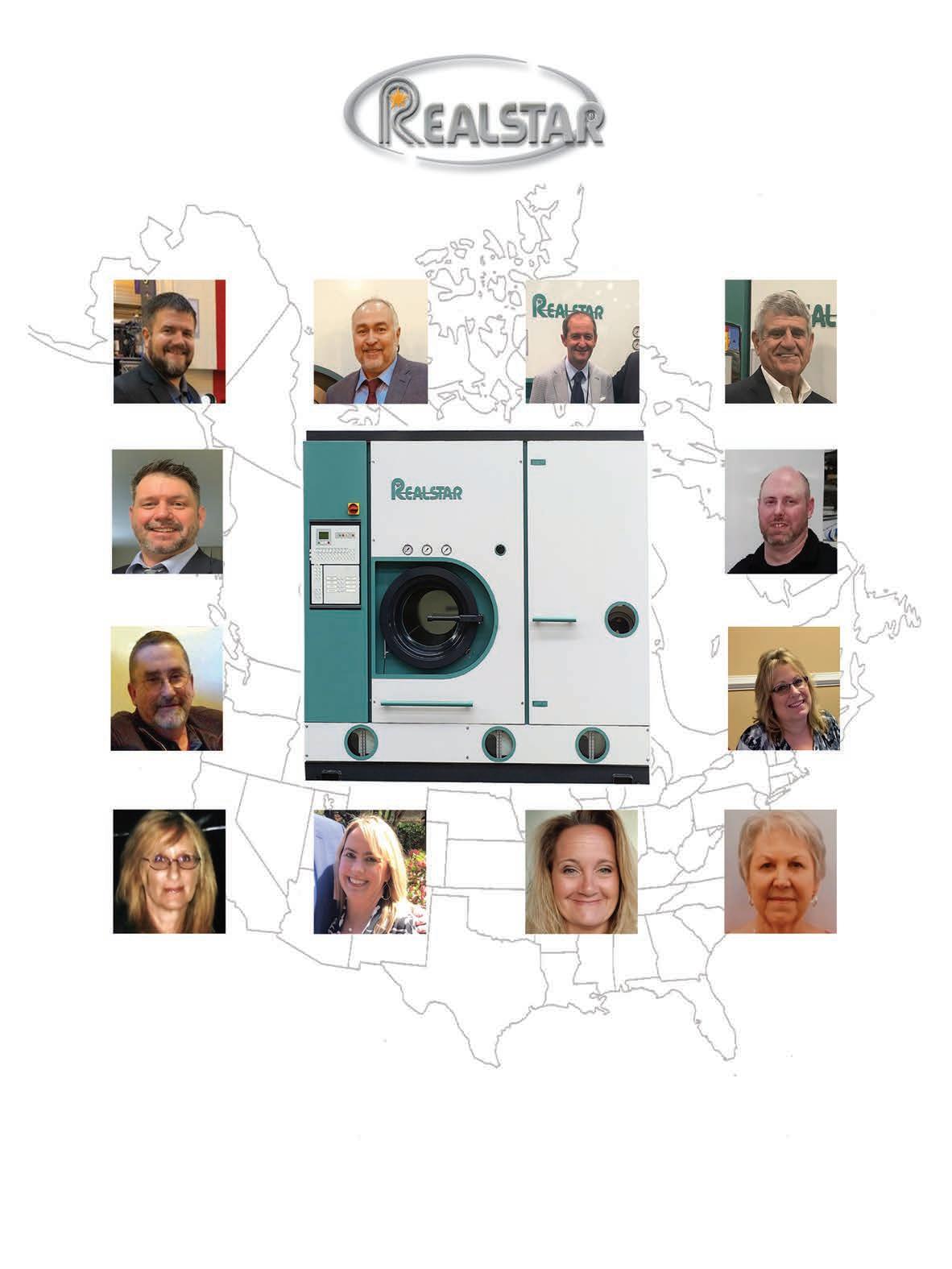

 By Dave Davis, Editor
By Dave Davis, Editor
When it comes to caring for delicate — and expensive — couture clothing, there’s no substitute for the right equipment and experience in cleaning success to bring peace of mind to its owner.


For Jason Loeb, owner of the South Florida-based Sudsies Garment Care, that level of care begins with


clear communication, describing his process of cleaning high-end clothing to the customer.
“You have to explain to them the difference you bring, and what they need,” he says. “They need confidence. They need to be confident when they bring in a $13,000 skirt or a $1,200 dress shirt.”
Loeb has worked hard to make sure his customers are confident in his business and process, and this has led to happy customers, he says, who become repeat customers.
“Do you think this person who has a $1,200 dress shirt

doesn’t have 50 of them?” he asks. “We have people dropping off bags of clothes with 10 items (that) could be worth $40,000 or $50,000. We have people who send us garments from all over the world. They do it because they have confidence in us. They understand the value that they get, and they know we’ll take care of them.”
In 2008, Sudsies saw a significant opportunity to drive growth by increasing its designer garment business. While the chance was exciting, Loeb knew it wouldn’t be easy, as meeting the needs of couture customers would require advanced cleaning technology and know-how.
Couture clothing — the high-end garments that Sudsies specializes in cleaning — is different from everyday wear in both the materials used and the skill of its makers.
Couture materials can include exclusive laces; feather fabrics; beaded fabrics; high-fashion silver and gold fabrics; exclusive silk fabrics; cotton and linen fabrics; luxury cashmere; and bridal dress fabrics.

The care taken in creating couture clothing also sets it apart from more common apparel. Loeb says that it takes an average of 150 hours to create a “simple” couture dress or suit, and can take more than 1,000 hours to create a piece that involves fine embroidery or other embellishments.
Loeb believes in training his team to take care of customers and their garments, no matter if it’s for their normal everyday clothes or the height of haute couture.
“Our people go through an 18-day program of training, which is about eight hours a day in the classroom, and then two weeks live with somebody before they ever take care of a customer,” he says. “If you become a Sudsies valet — and we have more than 40 them — you go through the same training program, and then spend another two weeks with someone on the road.”
When it comes to cleaning clothes that can cost thousands of dollars per piece, however, Loeb has expert staff members to take care of those customers.


“Our cleaning professionals have been with us for a very long time,” he says. “Our cleaning department people have been with me for 15 or 20 years, and they’ve been trained since day one. It’s not just knowing cleaning — it’s knowing what to clean, and if it needs deep cleaning. There are many different levels of cleaning.”
Perhaps the most vital part of the process, however, is to build trust by communicating with the customer.
“We don’t clean items without the customer’s authorization,” he says. “What does the customer expect for you to achieve? You always have to be able to communicate that effectively. If you can’t, it’s not going to work.”
Since starting this service, Sudsies has made a name for itself in the industry — so much so that it trains staff from cleaning companies across the nation in its couture cleaning processes.
The other side of the couture equation is the equipment necessary to treat delicate fabrics and materials gently so they can stand up to the process and emerge refreshed.
In 2018, Sudsies turned to laundry equipment manufacturer Miele to see what the European brand’s products could provide. Loeb purchased the company’s PW 6321 75-pound washing machine. Within weeks, Sudsies added 16 more Miele machines to its roster.
As much as he values communicating with his customers, he appreciated the company’s willingness to communicate with him.
“Miele takes their sales a step further and really educates their customers on the equipment and on the benefits of wet cleaning,” he says. “Miele prioritizes educating others on the process and its history, as well as debunking myths.”
While Sudsies exclusively uses Miele washers, Loeb understands that wet cleaning is more than just the equipment. His business also uses products from soap and
detergent manufacturer Kreussler, who partnered with Miele in developing its wetcleaning process.
“(Successful wet cleaning is) a partnership of the right equipment, soaps and softeners, and training, allowing us to clean high-end textiles in a gentle way that protects and prolongs the life of the material.”
Loeb believes that it is important to continuously be on the search for new processes, machinery, and techniques to serve his customers, whether they are bringing in haute couture or daily wear. Adding equipment such as Miele wetcleaning machines, he says, has served him well in achieving the goals he’s set out to accomplish.
“Wet cleaning is an enhancement for typical dry cleaners and is an opportunity for them to become garment cleaning professionals,” he says. “It steps up the quality of our work tremendously.”
Watching all steps of the cleaning process, from determining the customer’s desires at intake to handing them back their garments in a way they’ll appreciate, is something Loeb says he takes very seriously — and makes sure his staff does, as well.
“If it doesn’t start out right, it doesn’t end right,” he says, “and it’s very important to teach that.”

people,” Hargrove-Avery says. “As a dry cleaner, you might think you have nothing to offer — you might think, ‘What am I going to talk about, dry cleaning?’ — but you do. You’re running a business. Talk about your last successful marketing plan or your last great humanresource onboarding idea that you came up with. You’re not just a dry cleaner. You’re a business owner.”
When owners open their minds to new ideas, knowledge and possibilities, there can be a frightening moment when they realize just how large a torrent of information there is for the taking.
“When I get overwhelmed, I just have to step back,” Hargrove-Avery says. “When too much is going on, it can make a person freeze when you don’t know what the next move is. So, look at the changes coming down the line, and then just break them down into tiny pieces.”
She uses the example of researching a potential new piece of equipment for the plant.
“Sit down and ask what the difference is between this and what you have been using,” she says. “What do I have to know in order to make this piece of equipment
www.parkerboiler.com





work? What’s the benefit of having it? How much time will I save using it? Can I do it without this piece of equipment? Go through all the steps.”
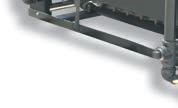
This examination method works for any part of your business, Hargrove-Avery says.
“Whether it’s figuring out a marketing program, a hiring or onboarding program, or whatever you’re trying to figure out,” she says, “look at the big picture and ask, ‘What are the 10 steps that can get me there?’ Sometimes, it might have to be 20 steps if it’s a much bigger project. But if you look at all the projects we all have to do every day, life can look overwhelming. If you break it into small chunks, I think that you can accomplish way more than you set out to do, and don’t be afraid to try a different way.”
No matter what avenue is taken or information is found useful, cleaners must continually move forward, Engh says. They can’t rest on “the way it’s always been done.”
“If you sit back and wait for things to happen, you will get run over,” he says. “If there was any huge lesson that we all learned in COVID, it was that those who reacted quickly have thrived coming out of this. Those (businesses) waiting for things to happen are no longer with us.”
Products have proven to last up to 10 times longer than similar production in this industry and applications.


We have many installations with steam boilers that have been in service for over 50-years, 10 hours per day.
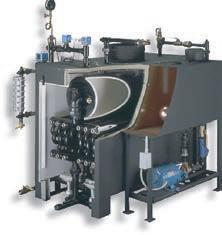

Our heating surface or amount of steel absorbing energy has always been 2 to 3 times that of other units (up to 6 sf of heating surface per boiler horsepower, which some units are closer to 2 sf of steel per hp, and some even 1 sf).

While the writing has been on the wall for decades, a sunset deadline for a solvent used in U.S. drycleaning plants has finally been proposed by regulators.
In a statement issued in early June, the U.S. Environmental Protection Agency (EPA) proposed a ban on most uses of perchloroethylene, also known as PCE or perc. It’s used in many fields, such petrochemical manufacturing and the aerospace industry; dry cleaners have used it as a solvent for decades.
In its statement, the EPA says it’s taking this step with perc because it has identified “risks for adverse human health effects, including neurotoxicity from inhalation and dermal exposures as well as cancer effects from chronic inhalation exposure.”
“We know that exposure to PCE is dangerous for

people’s health, and today’s rule is an important first step to keeping communities and workers safe,” says Michal Freedhoff, assistant administrator for the Office of Chemical Safety and Pollution Prevention. “We’ve proposed to ban the uses we know can’t continue safely, and we’ve made sure that stringent controls are in place to protect workers for the uses that remain.”
As currently written, the proposed rule would phase out perc on different timelines for various industries, with the ban going into effect for most within 24 months of its passage.
For the drycleaning industry, businesses with older, third-generation drycleaning machines would have to stop using perc within three years and switch to alternative solvents. Cleaners with newer fourth- and fifth-generation equipment, which collects and stores perc more efficiently, would have 10 years to make the change.
One reason that the drycleaning industry has been given a longer phaseout timeline is because of actions taken by the Drycleaning & Laundry Institute (DLI) and the National Cleaners Association (NCA), says Jon Meijer, DLI’s director of membership. Understanding that this type of action has been discussed for years, the organizations were proactive and got involved in discussions with the EPA early on.
“For most other industries, except for organizations like NASA where there’s not a replacement, it’s going to be banned, but we were able to secure at least a 10-year phaseout on most equipment,” Meijer says. “We would still like to see a longer phaseout, though — we are arguing for a 15-year period — because the lifetime usage of a drycleaning machine is between 15 and 25 years.”
A major factor for the longer timeline is that dry cleaners are, by far, some of the smallest businesses that use perc, he explains.
“There are a lot of mom and pop stores affected by this,” Meijer says. “Right now, they are still picking up the pieces from COVID and trying to get back to normal. Financially, for a lot of cleaners, it would be very difficult to replace their equipment now — it could put them out of business. That’s why we’ll be pushing for 15 years in the comment period.”
Fortunately for the drycleaning industry, this proposed rule did not come as a surprise. Perc has been under scrutiny for its potentially harmful effects since the 1970s.
“DLI has been recommending for 20 years that people look for alternatives,” Meijer says. “The Occupational Safety and Health Administration (OSHA), the EPA and different agencies were regulating the use of perc more, and it wasn’t going to get better — it was always going to get worse. The industry has done a great job of moving away from perc for many years.”
Meijer estimates that, at its peak, 80-85% of dry cleaners in the United States used perc. That number has fallen to about 30-35%, with the rest switching to hydrocarbon or alternative solvents. But it’s difficult to get exact numbers.
“The census comes out every five years,” he says, “so after five years, you get the number of dry cleaners. Well, we’ve lost a third of the industry in the past two years since COVID. Even then, the census only reports on cleaners with a payroll, and a lot of the smallest cleaners don’t have a payroll. It’s a husband and wife.”
It’s these smaller businesses, Meijer adds, that often still use perc because they haven’t been able to switch over to newer machines using alternative solvents.
In an effort to make this phaseout easier for small businesses, there is proposed funding in President Biden’s Fiscal Year 2024 budget request that, if approved, would offer new pollution prevention grants. These grants, the EPA says in its statement, “could be used to support small businesses like dry cleaners in their transition away from PCE.”
“Those grants, if they actually come out, should be a help,” Meijer says.
In the coming weeks, the EPA says it will host a public webinar for any-
one looking for an overview of the proposed rule and for discussion.
Also, according to the statement, “The EPA will accept public comments on the proposed rule for PCE for 60 days following publication in the Federal Register via docket EPAHQ-OPPT-2020-0720 at www.regulations.gov.”


Both DLI and NCA will be arguing for the best outcome for dry cleaners during the comment period, Meijer
says, and are looking for input from dry cleaners to make their case the strongest it can be.
He also urges dry cleaners to take this proposed ban to heart when it comes to making decisions about their equipment.
“There’s only one message: As soon as you are able to, look for an alternative solvent. Don’t go back to perchloroethylene. That’s just a nowin situation.”




• SolutionsforlaundriesandDryCleaners: and innovative laundry machines for commercial use


• The“Green”alternativetodrycleaning:WetCare - The original wet cleaning system developed by Miele

• Economical & Sustainable: Less water, less energy, easy to operate
• SaveMoneyandTime: Fast wash & drying cycle times increase productivity
• PatentedHoneycomb® Drum(onWasher & Dryer): Cleans textiles with extra care, and extends fabric life expectancy
• ExcellentSpinPerformance: Very low residual moisture on account of high g-force


• Technology & Innovation: Always the right machine for efficient laundry care
• FreelyProgrammable: Up to 200 fully easy-to-use custom programs
2023 RATES: One- to five-time rate: $2.35 per word, boldface $2.40 per word. Minimum charge: $50.00 per ad. Call or write for our threeand 11-time rates. If box number is


used, add cost of 5 words. Display classified rates are available on request. All major credit cards are accepted.




DEADLINE: Ads must be received by
the 1st of the preceding month. For example, for a August ad, the closing date is July 1st.
PAYMENT FOR CLASSIFIED ADS: Must accompany order.

SUNBELT
•
•
$6.2
$1.4 million
price $5.6 million contact: ewood77579@cox.net
•
BUSINESS FOR SALE
CHARLOTTESVILLE, VA, OWNER RETIRING
The longest running and most successful operation in the community with 60+ years of service. Conveniently located near the University of Virginia Darden-MBA, Law & JAG schools. Clients include several UVA departments, local hotels, and municipal departments. Long standing customer base. Recent major equipment upgrades. contact: David Cooke 434-981-1667 or email: davidcooke2@mindspring.com
Free
Strategy Coaching Richard Ehrenreich’s PowerPoint Lecture covering Succession or Sale to the Outside Buyer World will be sent by email upon your emailed request. This program was given at a NC Cleaners Assoc. event. Along with this PP program, we will offer a limited amount of Exit Strategy Coaching without any obligation or cost. Ehrenreich & Associates, LLC has the unique experience of hands-on Drycleaner Operations, Cleaner Brokerage & Mgmt. Consulting to HELP YOU toward your deserved Retirement!
You can do everything without us after reading our material or engage us as a Coach, Consultant and/or Broker to work with your transition!
Contact Richard at 301-924-9247 or Richard@EhrenAssoc.com











A surge in consumer confidence was seen in May 2013, according to the Surveys of Consumers from Thomson Reuters and the University of Michigan. “The surge in consumer confidence is exactly the type of economic jumpstart the Federal Reserve intended to result from its aggressive policies,” said Richard Curtin, the Survey’s chief economist. Curtin warned, however, that this is simply the start. “It will take actual and repeated income increases rather than simply a renewed optimistic outlook for consumers to permanently revise their income expectations upward.”
In 1994, the Florida Drycleaners Coalition (FDC) worked for the passage of the nation’s first comprehensive program for remediating drycleaner sites contaminated by cleaning solvents. As of 1998, of approximately 1,600 potentially eligible sites, more than 1,300 applied for the program. The legislation gave eligible sites immunity from cleanup cost liability. FDC’s initiative helped create a proactive attitude among dry cleaners, as more than 20 states enacted or sought similar programs.


50
While conventional wisdom said that the younger crowd should be the target for marketing, the big


money was with the middle-aged and older markets, claimed Executives’ Digest. There were 25 million spending units in the over-55 group, with 20 million in the under-35 segment. Moreover, the over-55 group had more money (17% were in the $15,000 category, while only 12% of the under-35 group fell into that category). The older group also had more discretionary income since they were largely without mortgage payments and dependent children.
85 YEARS AGO.
Recession — The National Association of Dryers & Cleaners (NADC) reported that, of the 169 cleaners who sent their 1937 cost figures in, they
were seeing a net profit for the year of nearly 6%. The NADC noted that the top-rated plants also reported an average expenditure for advertising of almost 4% of sales. American Drycleaner reported that the president of a large manufacturing company said, “We believe that it is easier for a company to improve its position and strengthen its opportunities by increasing its efforts rather than decreasing them, during a period of recession. To this end, we are not only spending more money in advertising, but we have materially increased our sales activities by adding several new men to our staff.”
— Compiled by Dave Davis, Editor









When you welcome American Express® Cards, you have access to benefits, services and programs to help your business thrive, including curated o ers and discounts to help you get more out of your business, and solutions and tips to help attract new customers. Scan the QR code for more information on available resources.













